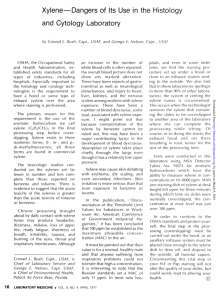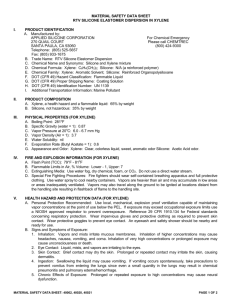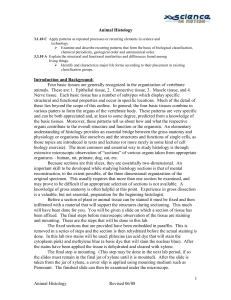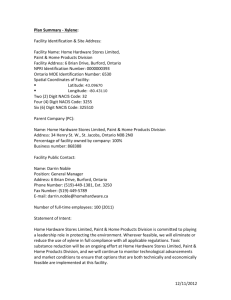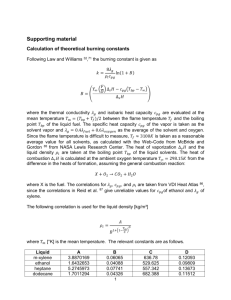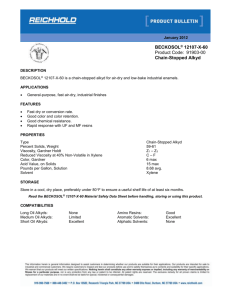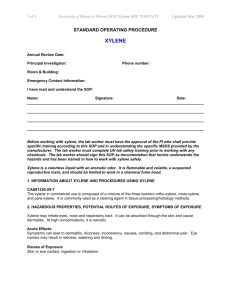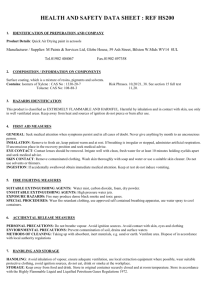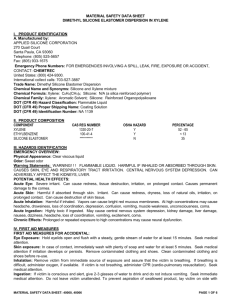Bronson Methodist Hospital: A systematic
advertisement
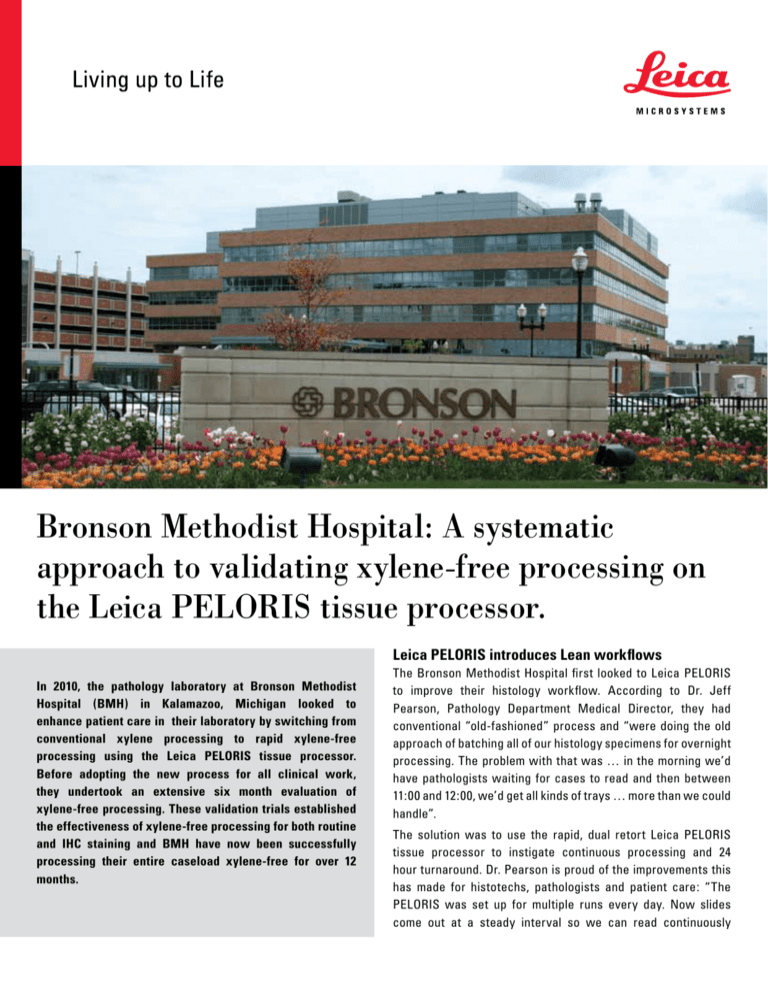
Bronson Methodist Hospital: A systematic approach to validating xylene‑free processing on the Leica PELORIS tissue processor. Leica PELORIS introduces Lean workflows In 2010, the pathology laboratory at Bronson Methodist Hospital (BMH) in Kalamazoo, Michigan looked to enhance patient care in their laboratory by switching from conventional xylene processing to rapid xylene‑free processing using the Leica PELORIS tissue processor. Before adopting the new process for all clinical work, they undertook an extensive six month evaluation of xylene‑free processing. These validation trials established the effectiveness of xylene‑free processing for both routine and IHC staining and BMH have now been successfully processing their entire caseload xylene‑free for over 12 months. The Bronson Methodist Hospital first looked to Leica PELORIS to improve their histology workflow. According to Dr. Jeff Pearson, Pathology Department Medical Director, they had conventional “old‑fashioned” process and “were doing the old approach of batching all of our histology specimens for overnight processing. The problem with that was … in the morning we’d have pathologists waiting for cases to read and then between 11:00 and 12:00, we’d get all kinds of trays … more than we could handle”. The solution was to use the rapid, dual retort Leica PELORIS tissue processor to instigate continuous processing and 24 hour turnaround. Dr. Pearson is proud of the improvements this has made for histotechs, pathologists and patient care: “The PELORIS was set up for multiple runs every day. Now slides come out at a steady interval so we can read continuously www.leica-microsystems.com without getting backed‑up. Pathologists like it better and histotechs do too. We get approximately 95% of non‑decal cases signed‑out within 24 hours. No one else can do that. Clinicians tell me that our turnaround time is much better than [other laboratories’]. They noticed because [24 hour turnaround] allows them to complete a case in their mind, because if you get results the next day, you remember that patient”. The pathology laboratory’s Director, Lois Van Enk, who was the laboratory manager during the early testing of Leica PELORIS, summed up the advantages of the new workflow as: “a dramatic improvement in our patient care and turnaround, in customer satisfaction to clinicians and for that patient waiting on the other end for the call on their biopsy.” Exploring xylene‑free processing The BMH laboratory had many reasons to try xylene‑free processing. The department has a green, eco‑friendly mentality and the laboratory also wanted to reduce staff exposure to xylene. Their main concern though was patient safety which made them initially cautious. To fully validate the process for clinical diagnostic use would require a side‑by‑side comparison with xylene‑processed tissue. Dr. Pearson explains “It was the great unknown. Is this going to work or not?” We wanted to do it for safety and eco‑green reasons, and we couldn’t do it until we had two processors to run and compare them side‑by‑side”. Fortunately, as Dr. Pearson explains, “Lois had the foresight to say, ‘Hey, we need a second one’. We were so pleased with the processing ability we wanted a second instrument so that we wouldn’t have to use a conventional processor at all. So when BMH received delivery of a second Leica PELORIS in early 2010, they were able to instigate a very careful plan to validate the suitability of xylene‑free processing for their clinical work. Proceeding carefully Before BMH would adopt xylene‑free processing for clinical diagnosis they wanted to be absolutely sure that the process would not damage or degrade any tissue types. So initial small‑scale testing was done with excess tissue. Dr. Pearson explains: “We were nervous and anxious, and we took it very slowly. So we started out with excess tissues, a placenta or colon, to test it out, and didn’t see any difference, it worked fine”. The next step was to do side‑to‑side comparisons with real cases. Initially using one cassette from a case to test xylene‑free processing, for example one cassette out of twenty for a whole breast cancer case. Then, as their confidence grew and the results were encouraging, more cassettes were put through the xylene‑free process with cases being split between xylene and xylene‑free. According to Dr. Pearson : “for a TURP, where you’re looking at prostate chips, we’d split them up and do four cassettes conventional processing, four cassettes xylene-free”. Top (left to right): Lois Van Enk, Dr. Jeff Pearson and Virginia Rupert. Bottom (left to right): Kim Peterson with Sarah Langworthy. www.leica-microsystems.com Encouraging results On‑going success Over the next five months, more and more tissue was processed xylene‑free, the processing quality continued to be comparable to conventional xylene processing. The laboratory continued to increase their xylene‑free experience with not only routine staining, but also IHC slides, comparing xylene to xylene‑free “For breast cancer cases, the laboratory processed ER, PR, and HER2 neu using both xylene and xylene-free protocols then compared the results and: “never saw the slightest bit of difference”. On November 10, 2010 BMH switched all tissue processing to xylene‑free on the Leica PELORIS. Since that time they continue to successfully process around 1500 cassettes per week and the results from the long validation trial have been confirmed with no quality issues found. Dr. Pearson was not surprised that xylene‑free results were comparable to xylene as: “it doesn’t affect the fixation. You’re still using formalin‑fixed, paraffin‑embedded tissue. So intuitively, you wouldn’t expect that to change antigenicity at all, and it didn’t in any way”. Superior sectioning While the xylene‑free staining results continued to be indistinguishable from the xylene processed sections, the laboratory did notice one change – the xylene‑free sections were actually easier to section. Senior Pathology Technician, Virginia Rupert explains that: “the histotechnicians would basically dual for the xylene‑free trays because they were easier to cut”. Dr. Pearson concurs saying that the improvement was across all tissue types: “but you really notice it on little biopsies with your prostate needles and colon biopsies.” Long term validation In total, the BMH validation process lasted for seven months. All types of tissue were processed xylene‑free and many different stains used. In all, 9638 cases had samples processed xylene‑free and all sections from xylene‑free blocks were at least equal in quality to the xylene processed equivalent. During the parallel processing period, Virginia Rupert explained how they sent trays to pathologists marked: “xylene or xylene‑free because we wanted them to report back adverse effects”. Throughout months of testing the laboratory staff kept waiting for something to go wrong or for someone to say, ‘You’re HER‑2neu FISH doesn’t work’ or ‘Your MSI test in your colon cancer doesn’t work’. But it never happened and eventually, as Dr. Pearson states, the team at BMH “realized it was better – we actually realized that [xylene‑free] was superior.” The blocks continue to be easier to cut with the histotechnicians reporting that overall tissue is not as brittle and blocks don’t need to soak for as long. BMH have also experienced no issues with instrument reliability due to the xylene‑free process. With 12 months of clinical use, BMH has confirmed that the xylene‑free process does not have a negative affect on molecular testing. Dr. Pearson stated “We’ve never had any failures when we send those out for testing. It’s never affected the rate of positivity for either HER‑2neu or ERPR; stayed exactly the same”. Xylene‑free validation trial Duration: 7 months Cases: 9638 Blocks: approx 11,000 xylene‑free blocks compared to 11,000 corresponding xylene blocks Stains: Routine, IHC and molecular (external staining) Tissue types: IHC antibodies: ER, PR, HER2neu, CD45, CD20, OSCAR, CD3, PIN‑4, PSA, CK7, CK20, CDX2, PMS2, MSH2, MSH6 MLH1, MSI panel, , P53 and others. PCR (conducted by external ref labs): HER2 FISH, ALK1 FISH, Oncotype, EGFR and BRAF mutations. Results: • Quality of all xylene‑free sections were at least equivalent to xylene processed sections • Xylene‑free sections were easier to section Xylene‑free protocols These are the xylene‑free protocols BMH uses for various tissue types. All are Leica recommended protocols except for the 1.5 hour protocol which is BMH’s shortened version of the Leica 2 hour protocol. www.leica-microsystems.com BMH xylene-free protocols 1.5 hr protocol formalin 4 hr protocol temp [°C] time [s] 8 hr protocol temp [°C] time [s] temp [°C] time [s] 12 hr protocol temp [°C] time [s] 45 5 55 10 55 30 55 68 85% ETOH Ambient 1 Ambient 3 55 20 55 30 85% ETOH 55 9 55 22 55 30 55 40 80/20 Ambient 1 Ambient 10 55 30 55 50 80/20 55 12 55 40 55 60 55 90 IPA Ambient 1 Ambient 3 55 20 55 30 IPA Ambient 1 55 10 55 40 55 60 IPA 55 16 55 45 55 80 55 120 WAX 85 23 85 45 85 60 85 80 WAX 85 6 85 20 85 50 85 70 WAX 65 2 65 10 65 40 65 60 H&E staining protocols Protocols used by BMH on their Leica ST5020 Multistainer. step reagent hh:mm:ss exact dip 1 oven 0:07:30 no no 2 oven 0:07:30 no no 3 xylene 0:02:00 no no 4 xylene 0:02:00 no no 5 ETOH 100% 0:00:11 no yes 6 ETOH 100% 0:01 :30 no yes 7 ETOH 95% 0:00:11 no yes 8 ETOH 95% 0:01 :30 no yes 9 DI water 0:01 :00 no no 10 Hematoxylin 0:01 :30 yes yes 11 DI water 0:02:00 no yes 12 Clarifier 0:00:30 yes yes 13 DI water 0:02:00 no yes 14 Bluing 0:00:30 yes no 15 DI water 0:02:00 no no 16 ETOH 95% 0:01 :30 no yes 17 EOSIN 0:00:30 yes yes 18 ETOH 100% 0:00:11 no yes 19 ETOH 100% 0:00:11 no yes 20 ETOH 100% 0:02:00 no yes 21 ETOH 100% 0:02:00 no yes 22 xylene 0:00:11 no yes 23 xylene 0:00:11 no yes 24 xylene 0:02:00 no yes 25 xylene 0:02:00 no yes www.leica-microsystems.com Stain scoring sheet examples During the trial stage, BMH kept extensive scoring worksheets to confirm the quality of xylene‑free processing. BRONSON METHODIST HOSPITAL DEPARTMENT OF PATHOLOGY/HISTOLOGY LABORATORY INSTRUMENT VALIDATION SHEET INSTRUMENT_PELORIS SERIAL No:__ 0260369B __ Added an additional section to be processed on a xylene-free program to then be compared after sectioning to our xylene processed tissue. The results were favorable In all cases DATE INT TEST RAN ACCEPTABLE? Case No. Tissue COMMENTS/ CORRECTIVE ACTIONS 5/19/2010 5/19/2010 kp kp 8hr factory protocol 4 hr factory protocol Yes/No s510-9873 -1 Intervertebral disc Yes/No s510-9882 - Al left paranasal sinum bx Yes/No 510-9929 1-3,6 rt hemicolectomy Yes/No 510-9945 - Al, A2 colon Yes/No sl0-9948 - As, A4, A6, A6, Al0, A12, A14, A16, A18, A20 prostatectomy Yes/No 810-9950 - 2, 4 small intestine Yes/No 810-9952 -1 gall bladder Yes/No 810-9956 -1 appendix Yes/No 810-9965 -2 urinary bladder Yes/No 810-9966 -1 gall bladder Yes/No 810-9974 -1,2 endometrium Yes/No 810-9988 -B2 jejunum Yes/No 810-9990 -1 gall bladder Yes/No 810-9992 - B4 rt breast Yes/No 810-9995-A4 sigmoid colectomy Yes/No 810-9995 -Bl appendix Yes/No 810-9996 -1 left knee Yes/No 810-10002 -1 gall bladder Yes/No s10-10031 endometrium Yes/No s10-10041 A endometrium Yes/No s10-10041 C cervix Yes/No 510-10043 uterine contents Yes/No 510-10044 lung biopsy Yes/No s10-10047 vaginal/mucosa www.leica-microsystems.com Going Green. Part of the initial impetus to switch to xylene‑free processing came from the BMH Builds Green program. Bronson Builds‑Green! Bronson strives to create a healthy, healing environment for patients, staff and the community through pollution prevention, energy conservation and sustainable building design. Eighty‑nine percent of the materials from the demolition of the north tower were recycled. Here are some other choices Bronson has made to continue its focus of building green in the new North Pavilion: • Flooring made (carpet, rubber) from petroleum‑free materials • PVC‑free products • Energy‑efficient windows • Low‑emitting materials like adhesives, sealants, paints, composite woods • Using local and regional vendors to decrease transportation impact • Energy‑efficient infrastructure • Healing gardens and natural light • Exploring green roof options 95.10805 Rev A • 03/2012 • Copyright © by Leica Biosystems, Melbourne, Australia, 2012. LEICA and the Leica Logo are registered trademarks of Leica Microsystems IR GmbH.
